Virgin Galactic’s space plane broke apart in mid-air seconds after its re-entry system deployed prematurely in an accident on Friday that killed one of its pilots and left another seriously injured, US crash investigators have said.
SpaceShipTwo (SS2) was equipped with a “feathering system” to reduce its speed and stabilise its descent on return to Earth, but investigators found that the mechanism was activated before the space plane had reached the right speed during Friday’s test flight.
When the feathering system is deployed, the space plane’s twin tail booms rotate forwards and upwards, dramatically increasing aerodynamic drag and making the craft fall like a shuttlecock.
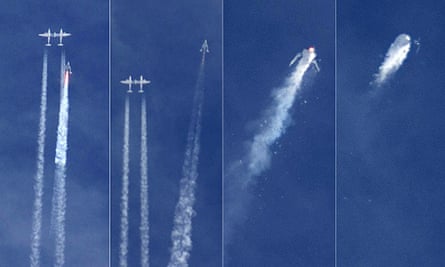
Christopher Hart, the acting chairman of the US National Transportation Safety Board, told a press conference on Sunday night that the co-pilot, Michael Alsbury, had unlocked the feathering system, but that the second stage of the process, which moves the wings into the feathering position, happened “without being commanded”.
“After it was unlocked, the feathers moved into the deployed position and two seconds later we saw disintegration,” he said.
“Normal launch procedures are that after the release, the ignition of the rocket and acceleration, that the feathering devices are not to be moved – the lock/unlock lever is not to be moved into the unlock position – until the acceleration up to Mach 1.4,” he added. “Shortly after the feathering occurred, the telemetry data terminated and the video data terminated.”
But Hart stresssed that the premature deployment of the space plane’s feathering system was “a statement of fact and not a statement of cause”. Investigators could take many more months to reach firm conclusions over the cause of the accident.
Asked whether investigators were “edging” towards the possibility of pilot error, he added: “We’re not edging towards anything. We’re not ruling anything out. We’re looking at all of these issues to determine what was the root cause of this mishap. We are looking at a number of possibilities including that possibility (pilot error).”
“We are a long way from finding cause. We still have months and months of investigation to do,” Hart said.
Fifteen federal US investigators have been combing the site of the fatal crash in California’s Mojave desert. On Sunday, the space plane’s fuel tanks and engine were found intact, contradicting earlier claims that SpaceShipTwo had exploded.
The space plane on which the Virgin boss Sir Richard Branson has pinned his hopes of sending commercial passengers to the edge of space – at a cost of $250,000 (£156,000) each – broke up during a test flight at about 45,000ft on Friday. The pilot, Peter Siebold 43, managed to parachute to the ground and was described as alert though with serious injuries; the co-pilot, Michael Alsbury, 39, was killed.
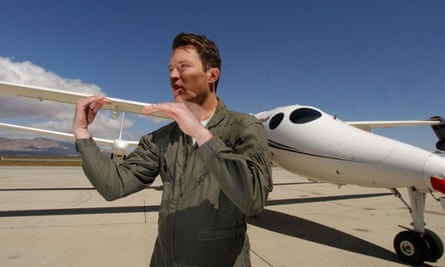
Virgin Galactic has denied reports that it ignored safety warnings ahead of Friday’s test flight crash. “At Virgin Galactic, we are dedicated to opening the space frontier, while keeping safety as our ‘North Star’. This has guided every decision we have made over the past decade, and any suggestion to the contrary is categorically untrue.”
In an interview with Sky News, Branson said: “We’ve spent many, many years building a spacecraft, a mothership, a space port, that I think can do the job and do the job safely. We will not start taking people until we’ve finished a whole massive series of test flights and until myself and my family have gone up, and until we feel that we can safely say to people ‘we’re ready to go’.”
“We need to be absolutely certain our spaceship has been thoroughly tested – and that it will be – and once it’s thoroughly tested and we can go to space, we will go to space. We must push on. There are incredible things that can happen through mankind being able to explore space properly,” he added.
Friday’s launch was the fourth powered flight for SS2 and was intended to test how the space plane fared on re-entry at supersonic speeds rather than to monitor the new fuel or the performance of the rocket on the way up.
The flight occurred in the context of very ambitious targets set by Virgin Galactic, which had been aiming to premier the first commercial flights as early as next spring. The desire to make the venture commercially viable carried with it huge engineering challenges.
Prime among those was to design a spacecraft capable of carrying six fee-paying passengers and two pilots as high as the edge of Earth’s atmosphere, the notional marker called the Karman Line, some 100km above sea level. Not only that, the enormous ticket price paid by the citizen astronauts on board had to be rewarded with a view back to Earth and its hazy blue atmosphere, and the experience of weightlessness.
SS2’s predecessor, SpaceShipOne, travelled to the edge of space twice in two weeks, returning to Earth safely on both occasions, 10 years ago. But the smaller craft could only carry two astronauts – not sufficient to make it commercially viable.
Will Whitehorn, former president of Virgin Galactic, rejected any suggestion that the project had been rushed. “This is nonsense. The project started in 2004 … this is the longest test flight in the commercial sector in history.”
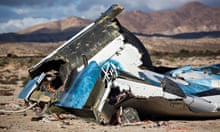



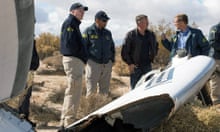
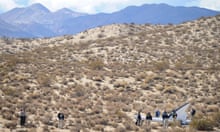
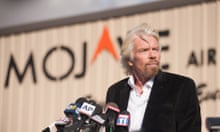



Comments (…)
Sign in or create your Guardian account to join the discussion